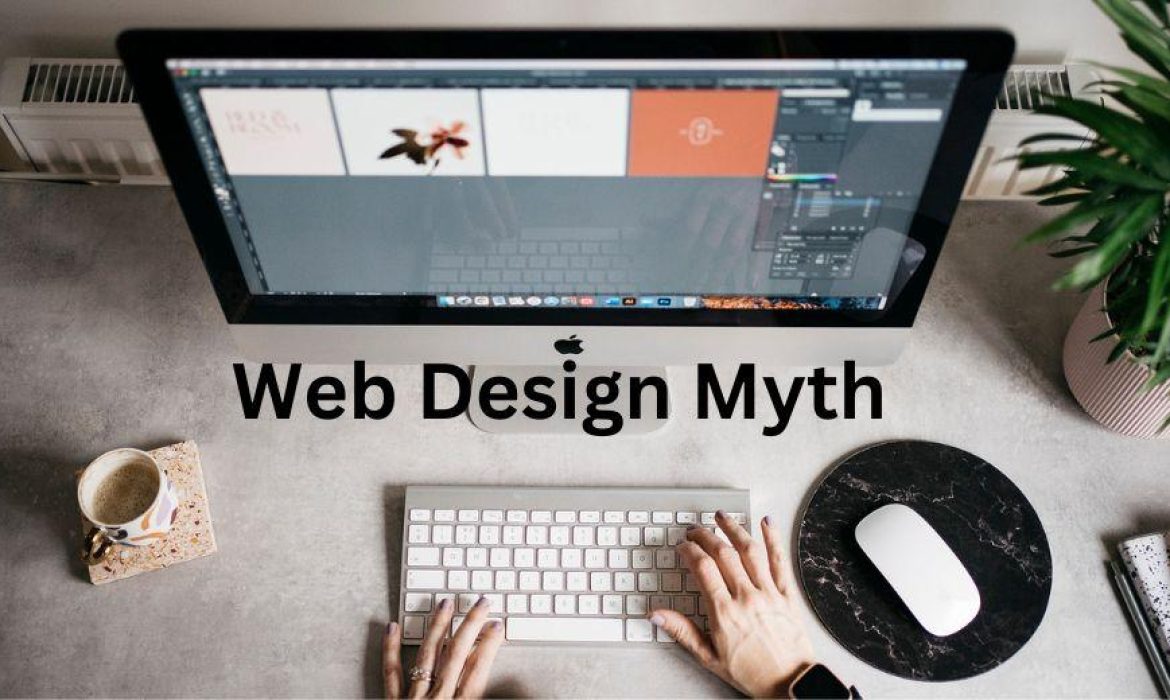ISO 9001:2015 , ISO 27001:2022
In the fast-evolving world of web design, numerous myths have developed over time. These misconceptions often lead businesses to make uninformed decisions, potentially costing them opportunities to create engaging, user-friendly websites. It’s time to set the record straight and debunk the most common website design myths. By separating fact from fiction, you can make better choices for your online presence.
Myth 1: A Beautiful Website is All That Matters
The Reality
While aesthetics play a significant role, a beautiful website alone won’t guarantee success. Functionality, usability, and user experience (UX) are equally, if not more, important.
A site may look stunning, but if it’s hard to navigate or fails to load quickly, visitors will leave. Effective web design combines visual appeal with seamless functionality to engage users and encourage them to take action.
Myth 2: Mobile-Friendly Design is Optional
The Reality
Mobile-friendliness is no longer optional—it’s essential. With more than half of global web traffic coming from mobile devices, websites must be responsive to provide a consistent experience across all screen sizes.
Search engines like Google also prioritize mobile-friendly sites in their rankings, making responsiveness critical for SEO and user retention.
Myth 3: More Features = Better Website
The Reality
Cramming too many features into a website can overwhelm users and slow down performance. Effective design focuses on simplicity and clarity.
Prioritize features that directly serve your audience’s needs and align with your goals. For instance, an e-commerce site needs a streamlined checkout process more than flashy animations.
Myth 4: Content Doesn’t Matter as Long as the Design is Great
The Reality
Design and content are two sides of the same coin. No matter how visually appealing your website is, poor content can deter users.
Clear, concise, and engaging content helps communicate your message effectively and builds trust with your audience. Strong web design complements the content, ensuring it’s easy to read and accessible.
Myth 5: DIY Website Builders are Just as Good as Custom Designs
The Reality
While DIY website builders like Wix and Squarespace are convenient and affordable, they have limitations. Custom-designed websites offer greater flexibility, scalability, and unique branding opportunities.
DIY tools may work for small-scale projects, but businesses with specific needs often find them restrictive in terms of functionality, SEO capabilities, and advanced features.
Myth 6: Once a Website is Built, It Doesn’t Need Updates
The Reality
Web design isn’t a one-and-done task. Technology evolves, user expectations change, and trends come and go. Regular updates ensure your website remains relevant, secure, and optimized for performance.
Failing to update your site can lead to outdated information, broken links, and security vulnerabilities.
Myth 7: Animation and Videos Always Improve Design
The Reality
While animations and videos can enhance user engagement, they must be used thoughtfully. Overloading a site with too many dynamic elements can distract users, slow down loading times, and frustrate visitors.
Focus on strategic use of multimedia that complements your message without compromising performance or usability.
Myth 8: SEO is Separate from Web Design
The Reality
SEO (Search Engine Optimization) and web design go hand in hand. Good design practices directly influence SEO by improving site speed, mobile responsiveness, and user experience—all factors search engines prioritize.
For instance, clear navigation, fast loading times, and optimized images improve UX and help your site rank higher in search results.
Myth 9: The Homepage is the Most Important Page
The Reality
While the homepage is often the entry point, other pages are equally crucial. Many users land on specific pages through search engines or social media links, bypassing the homepage entirely.
Every page should be designed with care, ensuring it provides value and aligns with your brand identity.
Myth 10: Web Design is Just About Coding
The Reality
Web design involves much more than coding. It encompasses UX design, visual aesthetics, branding, content strategy, and understanding user behavior.
A successful website is the result of collaboration between designers, developers, marketers, and content creators.
Conclusion
Believing in common website design myths can lead to missed opportunities and wasted resources. By understanding the realities behind these misconceptions, you can approach web design with clarity and purpose.
A well-designed website is more than just a digital storefront—it’s a dynamic platform that engages users, builds trust, and drives business growth. Keep these myths in mind as you embark on your web design journey and partner with experts who prioritize both form and function.
It’s time to let facts guide your decisions and create a website that truly works for your business.


